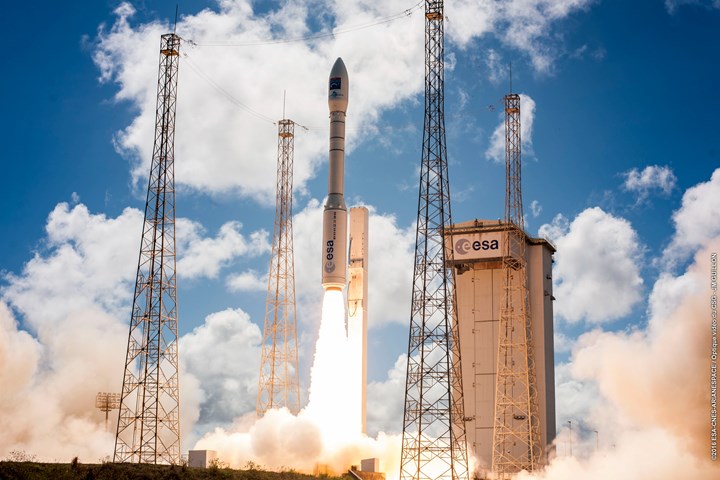Solvay to supply advanced composites, adhesives for space exploration
Ablative material, RTM resins and adhesives will be applied to a range of ESA space programs, including Avio’s Vega family of satellite launch vehicles.

Photo Credit: Solvay, PR016
Solvay (Alpharetta, Ga., U.S.) and space propulsion company Avio SpA (Rome, Italy) have signed a long-term agreement for the supply of composite and adhesive materials to be used across a range of programs including the , the European Space Agency’s (ESA) satellite launch vehicles designed to send payloads into low-Earth orbit (LEO).
Solvay will supply Avio with ablative material, resin transfer molding (RTM) resins and adhesives. Solvay notes that it has a strong — its products have been used across many space launch programs over the years due to their ability to withstand the extremely high temperatures produced by rocket motor exhaust. Ablative materials are just one example, which have been applied to several space applications from nozzles to exit cones.
Alternately, Avio has more than 50 years of history designing, developing, producing and integrating space launchers to place institutional, governmental and commercial payloads in LEO through its Vega rocket family.
“We are excited to extend our partnership with industry leader Avio and continue to support Vega-critical missions,” says Carmelo Lo Faro, president of Solvay’s Materials Segment. “We are all currently seeing renewed enthusiasm and investment in the global space race and we believe that our advanced materials will be key enablers for space exploration, space tourism and also the launch placement of satellite constellations. We helped put the first man on the moon and will be there for the first woman on Mars.”
Sergio Colabucci, Avio procurement director adds that the long-term agreement secures the supply of strategic products for its Vega family launchers in upcoming years.
Related Content
-
Low-cost, efficient CFRP anisogrid lattice structures
CIRA uses patented parallel winding, dry fiber, silicone tooling and resin infusion to cut labor for lightweight, heavily loaded space applications.
-
Automated robotic NDT enhances capabilities for composites
Kineco Kaman Composites India uses a bespoke Fill Accubot ultrasonic testing system to boost inspection efficiency and productivity.
-
Expanding high-temperature composites in India and the U.S.
Azista USA offers polymers and processes for carbon/carbon and other CMC, including novel hot-melt phenolic and phthalonitrile prepregs for faster cycle times, alternative solutions.






